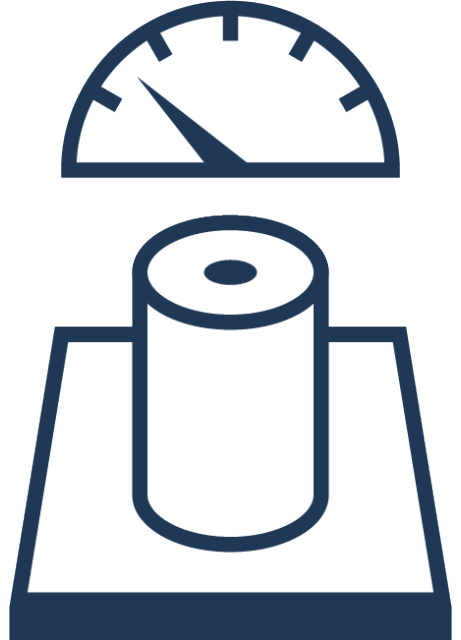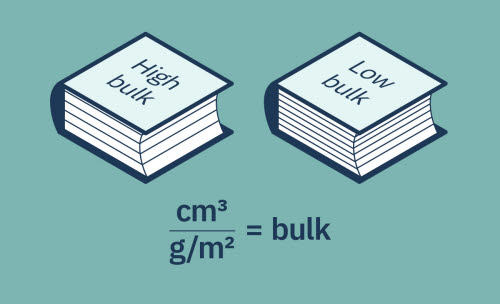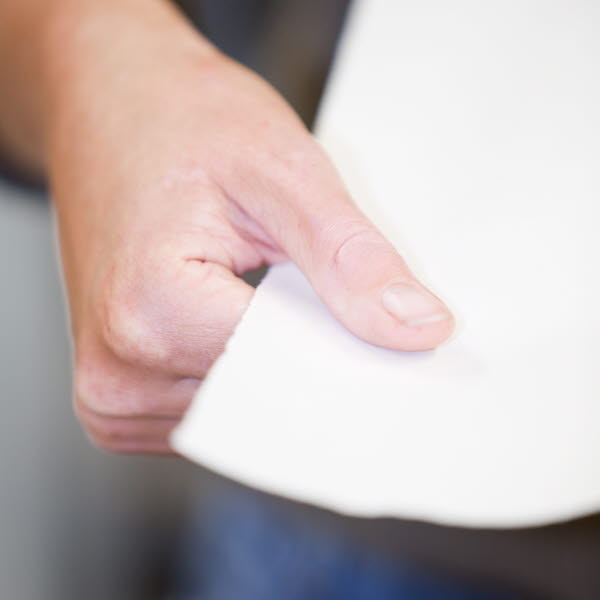Paper characteristics
Paper comes in many variations, and there are many parameters to keep in mind if you want to find the perfect one for your needs. Let’s have a look at the differences and how they will affect your printed product.
What is important when you go looking for paper?
Should you go for heavy or light-weight? And then there's this thing called bulk. Will opacity matter? Don't worry, just keep on reading and we'll sort it out!
1
Paper weight

Most people are aware that grammage has an impact on a printed publication. If you want a paper that is sturdy and thick you would probably go for heavier paper, but heavy paper isn’t the only way to a thick paper. The weight of paper is measured in gram per square meter, usually called g/m2 or gsm. You can calculate the weight of your magazine or figure out the cost of distributing a catalogue, but the grammage won't tell you anything about the thickness of your product or how sturdy it feels. So, let’s have a look at bulk and why it is important.
2
What is bulk?

Bulk is the thickness of the paper sheet in relation to its weight. It is a measure of how much volume you get in one gram of paper. If 1 cm3 of paper weighs 1 g then the bulk is 1.0. Less volume means lower bulk and more volume means higher bulk. This is an important key to how the paper is perceived by the reader. Using a high bulk paper that weighs less will give the reader the experience of a sturdy and reliable paper without adding unnecessary weight.
3
Paper transparency
When you read a magazine you want to be curious about the next page, not bothered by it. If the paper is too transparent, the print on the other side will be visible and affect the reading experience. The way to counteract this experience is to choose a paper with high opacity. When it comes to paper, opacity is a measure of the percentage of visible light that does not pass through the sheet. Meaning that a paper with high opacity is less transparent than one with a lower opacity value. If you wish to print colourful images on one side and aim for excellent readability on the other, you should choose a paper with high opacity.
4
Surface

How your fingertips experience the paper surface is important. At Holmen we produce uncoated paper and though it has no coating there are variations in how we treat the surface of the paper. All of our paper is calendered, a process where the paper is pressed between several pairs of cylinders. This is done at the end of the process and reduces the roughness of the paper and makes the surface glossier. With calendering it is possible to offer a range of finishes, from rough and matte to silk smooth, without coating the paper.
5
Is paper white?
In general you would say that paper is white, but when you compare different kinds of paper you can easily see the difference. How white the paper appears to be is depending on how much light it reflects as well as its colour. Three methods are used to determine the whiteness: Shade, Whiteness and Brightness. Shade is the colour of the paper, it’s measured in a model called CIE LAB and there are different shades for different needs. It’s common to produce paper that is either a bit yellow or a bit blue. A slightly yellow paper is comforting for the eyes when reading lots of text, while a paper that’s just a little blue will be regarded white. Whiteness is also measured in CIE LAB and defines how much light that is reflected in all wavelengths. The brightness of the paper is defined by how much of a specific blue light, at wavelength 457 nanometers, that is reflected by the material. Both whiteness and brightness are measured in percentage and can be above 100% due to the use of optical brightening agents. Brightest isn’t always the best.
Want to know more about paper?
Graphical paper is a thin and light medium that we at Holmen take pride in producing. We aim to have a portfolio that fulfil our customers’ requirements and enhances the reading experience. There are loads of information to be found in our technical data sheets, or have a look at our FAQ. If you want the latest updates about us and our products, please sign up for our newsletter, or just give us a call and tell us what you want to print and let us help you, we love to discuss paper!

